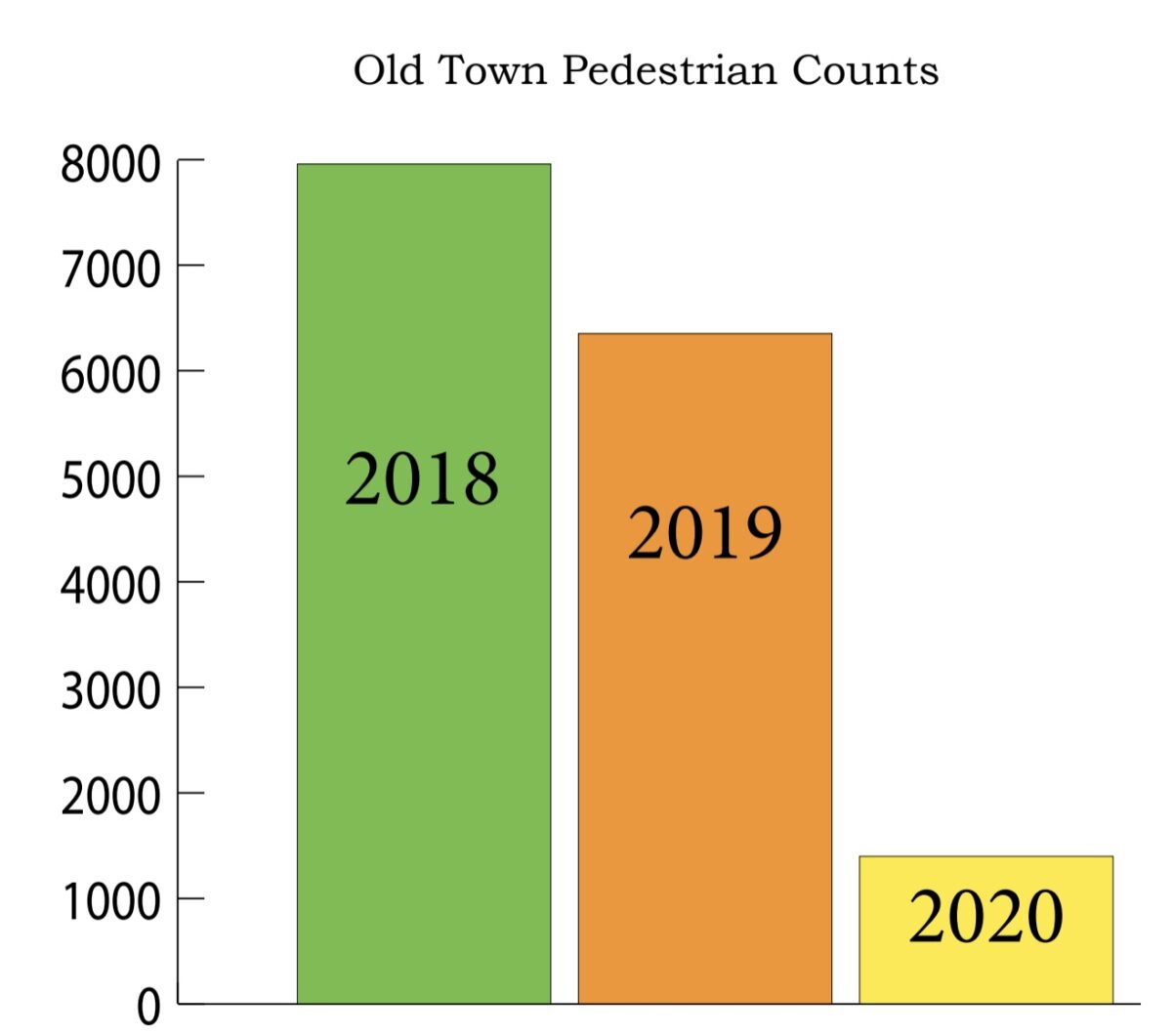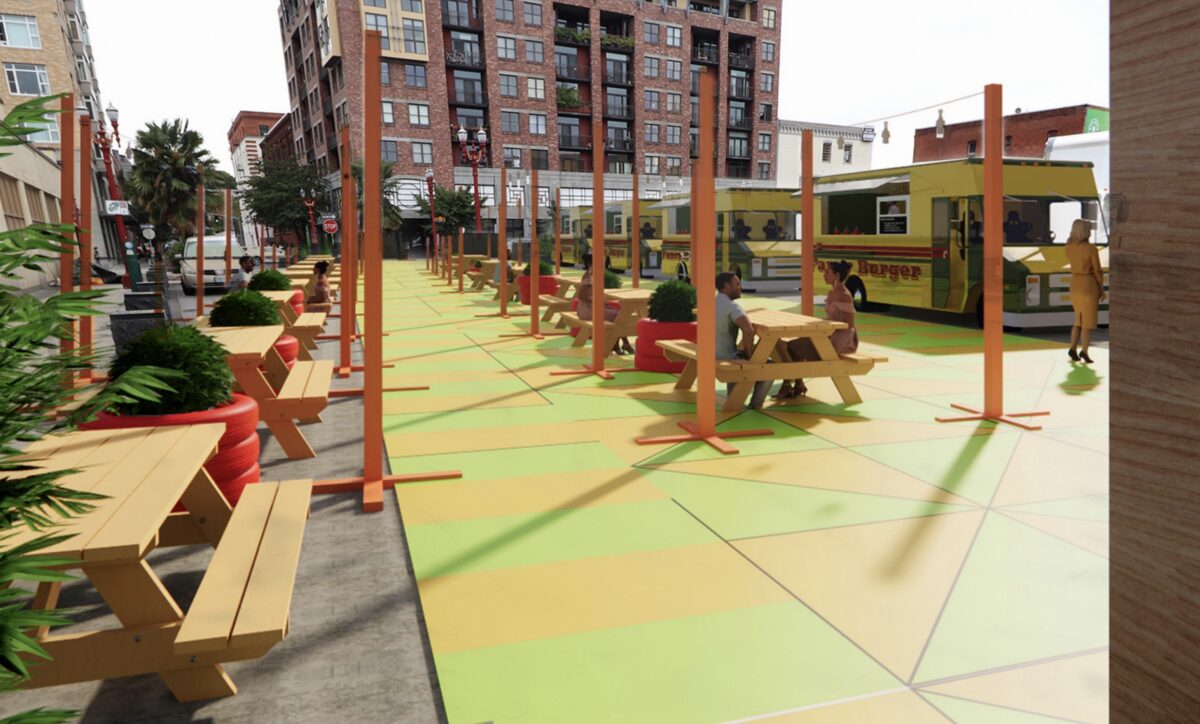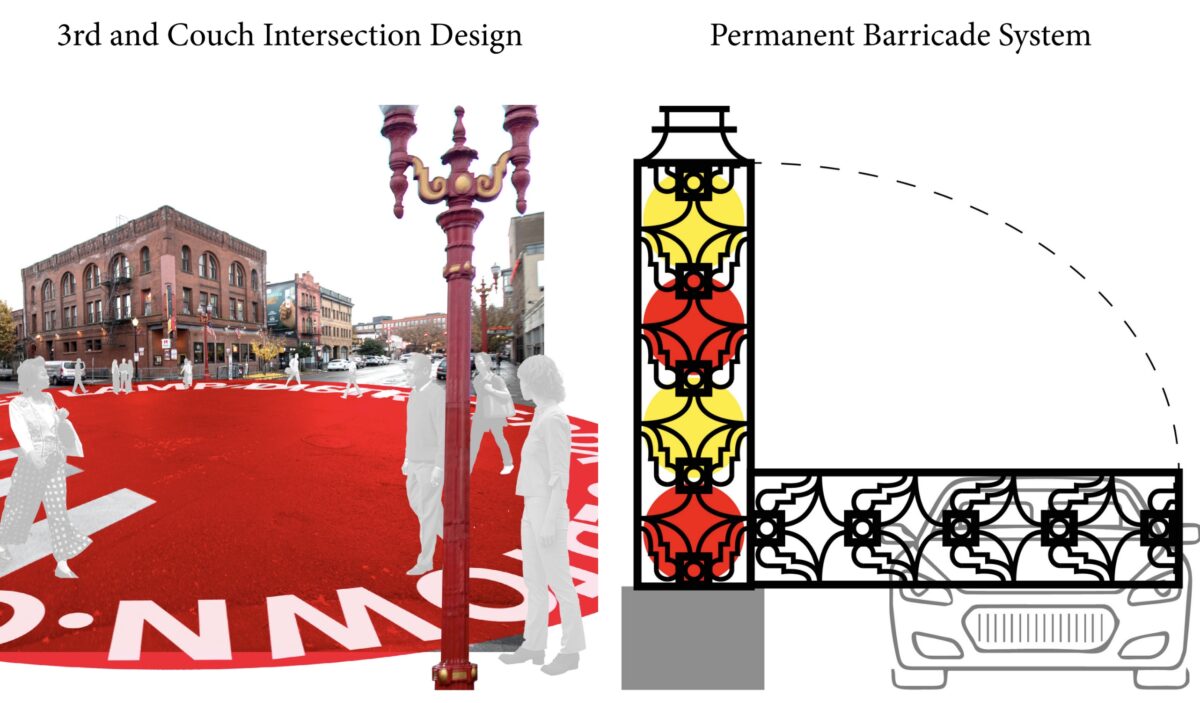
(Source: Old Town Community Association)
“With outdoor recreation gaining popularity during the pandemic a ripe opportunity exists to leverage existing cycling infrastructure for community and economic development purposes.”
It has been a very tough few years for Portland’s Old Town district. In 2020, 32 businesses closed their doors and according to counts by Downtown Clean & Safe, foot traffic dropped 78% compared to 2019.
Now neighborhood leaders see a light at the end of the tunnel, and there’s a person on a bike riding through it.
The Old Town Community Association (OTCA) plans to lean to their strengths as a historic district full of interesting architecture and destinations that are accessible by a variety of transit and cycling infrastructure. Their new, 42-page Post Pandemic Activation Plan puts public space front-and-center and includes conceptual designs for street makeovers they see as vital to economic recovery.
The plan was developed by Daniel Klinkert, former community development director for the OTCA, and several volunteers (including University of Oregon architecture students). Current OTCA Land Use and Transportation Chair Jonathan Cohen is already shopping ideas from the plan around in hopes of landing federal American Rescue Plan Act (ARPA) funds to help get some of them built.


Advertisement
Here are some of the proposals in the plan:






Atop Cohen’s list is a food cart pot on the east side of the surface parking lot on NW 4th between Couch and Davis (a.k.a. “Block 33”). He’s also says the OTCA has made major progress to move forward on their plans for a new skatepark at Flanders and Naito. Other ideas he’s excited about include major upgrades to the current plaza on SW Akeny and 3rd (Voodoo Donuts), and a major plaza on NW Flanders.
About the Ankeny plaza, the plan states:
“While this location has seen some upgrades in the form of a distinct pedestrian travel lane, planters, and alley lighting, the surface area remains rough, undefined, and devoid of public seating. Upgrades to the space could extend the periods of time that patrons spend in this area which could lead to measurable increases in density of activity.”
And about NW Flanders, which was designated a “Festival Street” in 2008, the plan says that flashy title hasn’t helped much at all because there has been no formal management entity to program or activate the spaces.
Another concept in the plan is the use of an automated “permanent barricade system” (see illustration above) to prevent car use in sections of what is now the “Entertainment District” around NW 3rd and Couch.
The plan also says that leveraging existing bike infrastructure — and the people traffic it attracts — as a key to Old Town’s recovery. “With the recent installation of the Flanders Greenway along with existing bike lanes on 2nd, 3rd, Naito, and Broadway, Old Town may have more bike lanes per square mile than any other neighborhood in Portland,” the plan states.
Here’s more on how Old Town envisions the potential of cycling:
“If existing bike lanes running though Old Town were to be enhanced by substantial greenery, wayfinding signage, secure bike racks, and other amenities, Old Town could benefit from more cyclists riding though and parking their bikes to patron the neighborhood. The aforementioned proposal to convert the Flanders Festival street into a food-centric plaza space could also leverage this bike path for additional patronage. With outdoor recreation gaining popularity during the pandemic a ripe opportunity exists to leverage existing cycling infrastructure for community and economic development purposes.”
The exciting concepts in this plan align well with the desire for downtown carfree zones Transportation Commissioner Jo Ann Hardesty has called for. They also align with what the Portland Bureau of Transportation has recently shown strong funding and policy support for: Using streets to create inviting spaces that can lead to the economic and social activity vital to a Portland renaissance.
Here’s to hoping the OTCA can build out this vision! Check out the plan here (PDF).
— Jonathan Maus: (503) 706-8804, @jonathan_maus on Twitter and jonathan@bikeportland.org
— Get our headlines delivered to your inbox.
— Support this independent community media outlet with a one-time contribution or monthly subscription.

